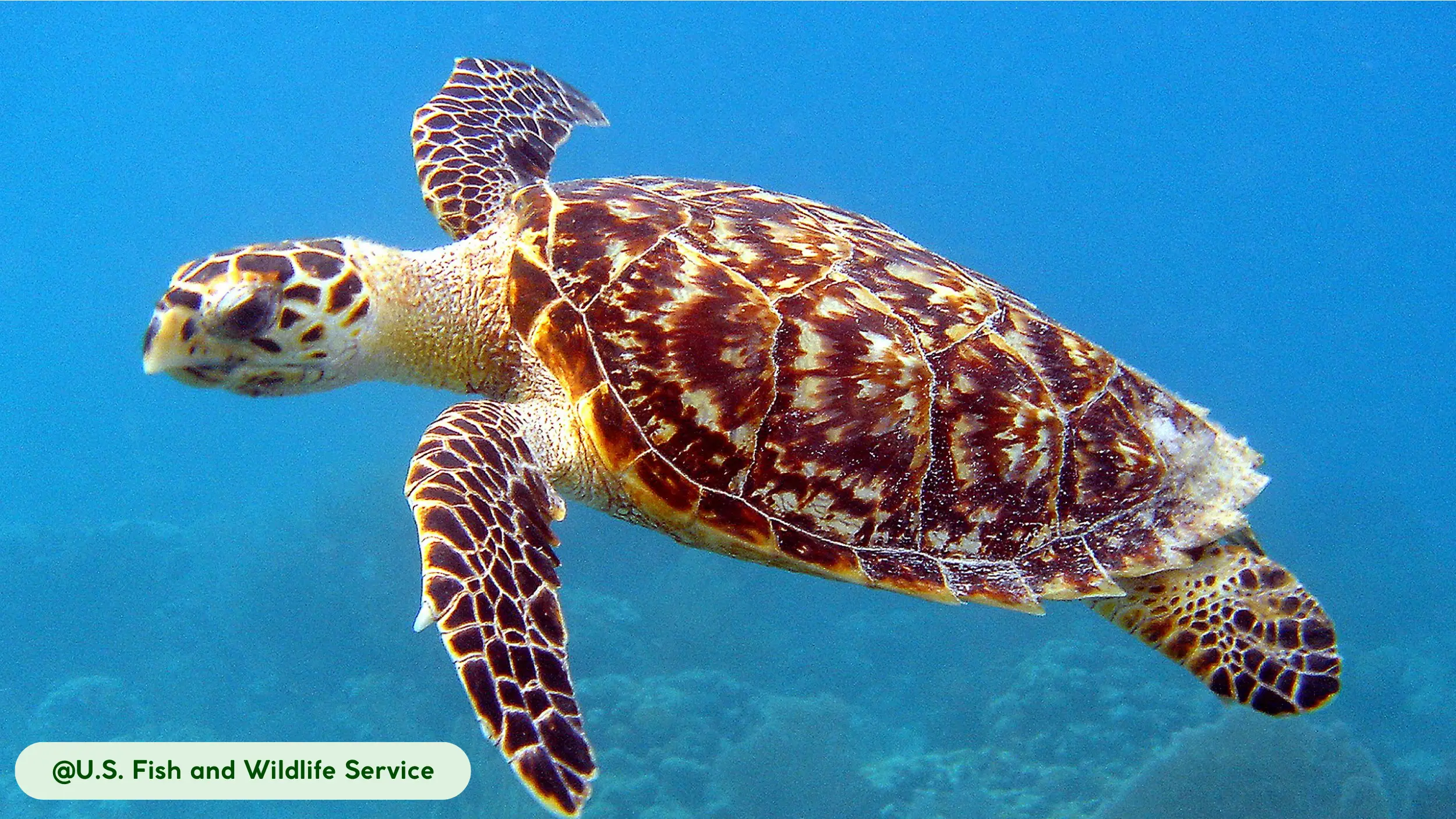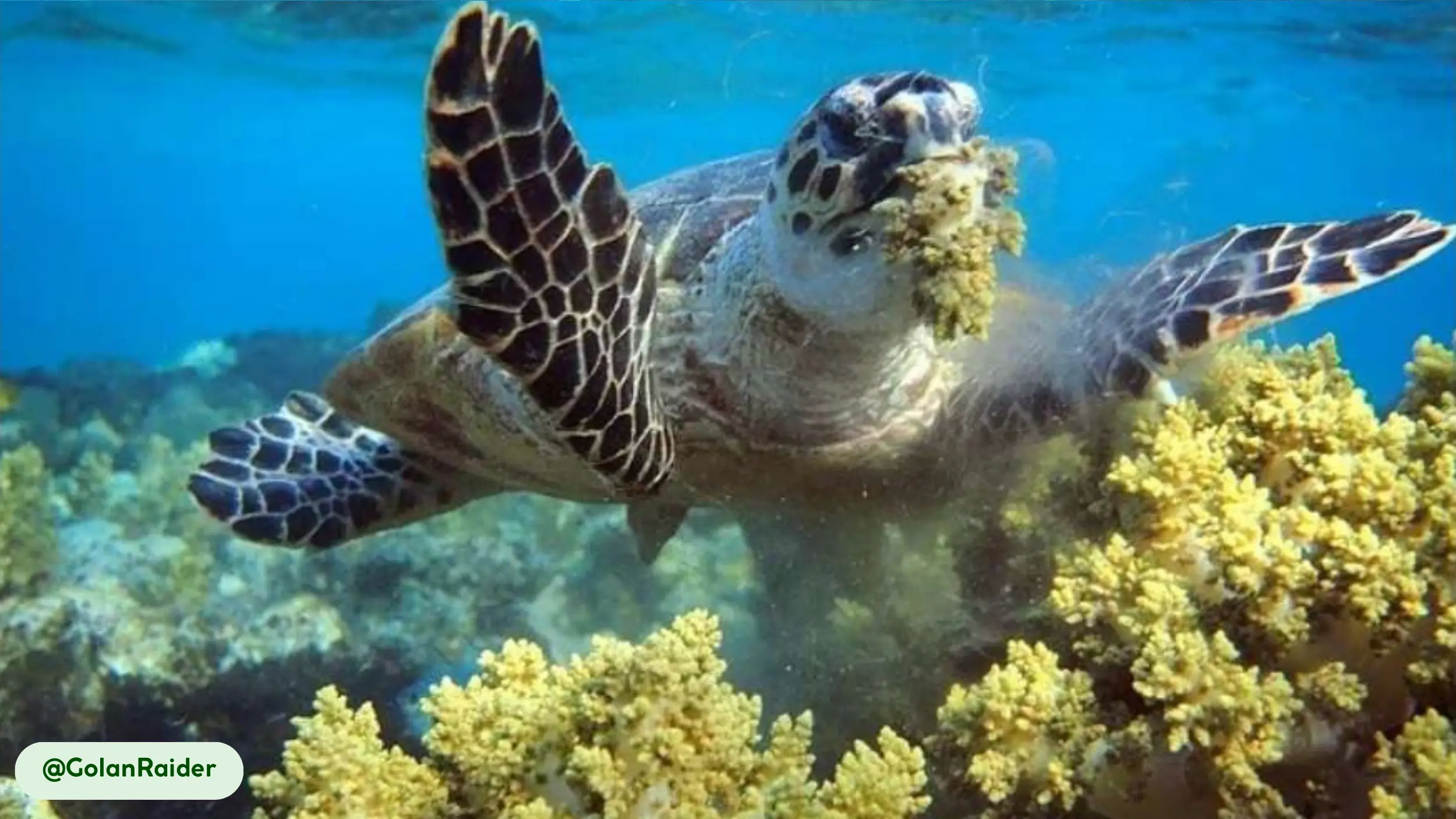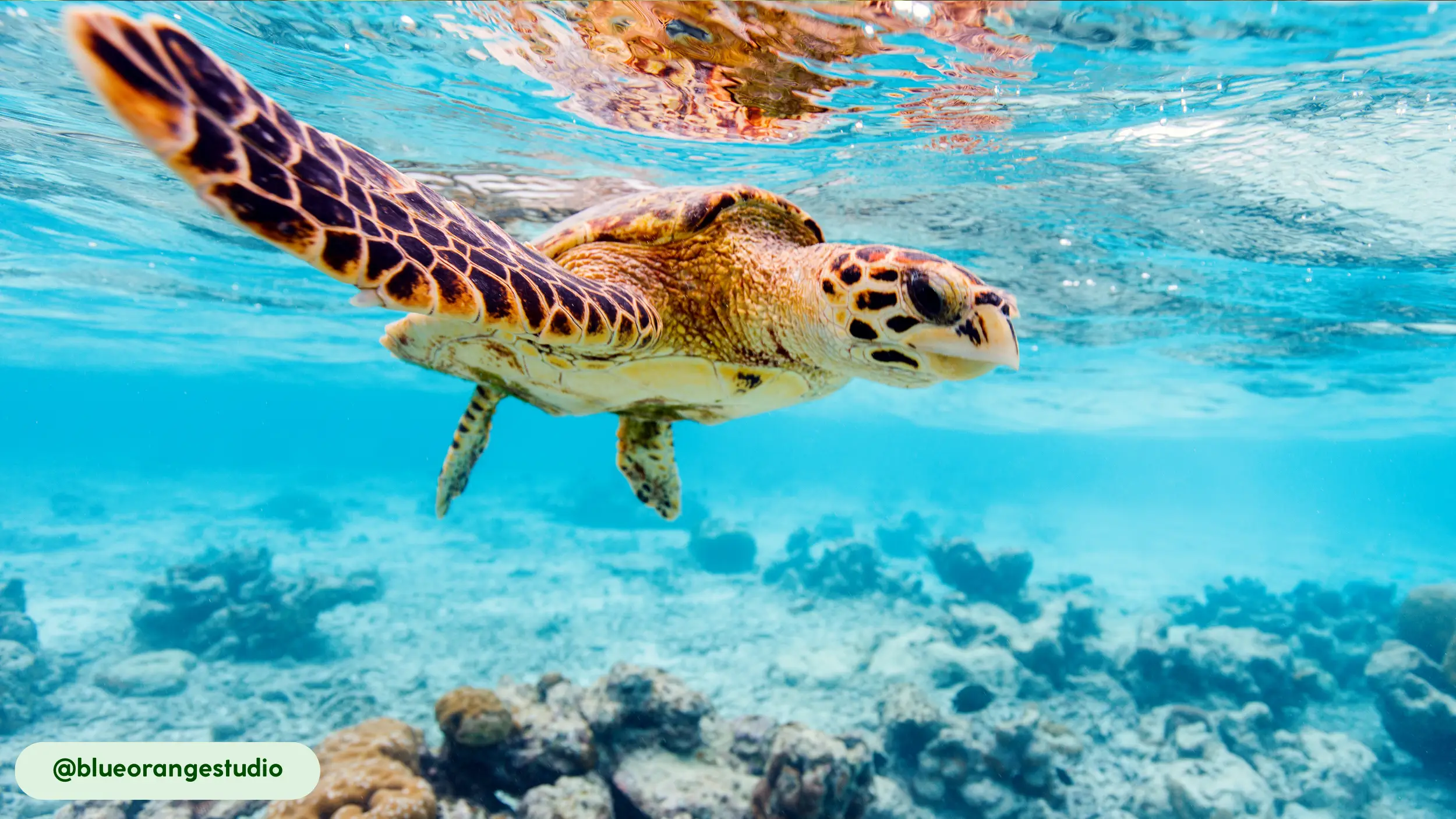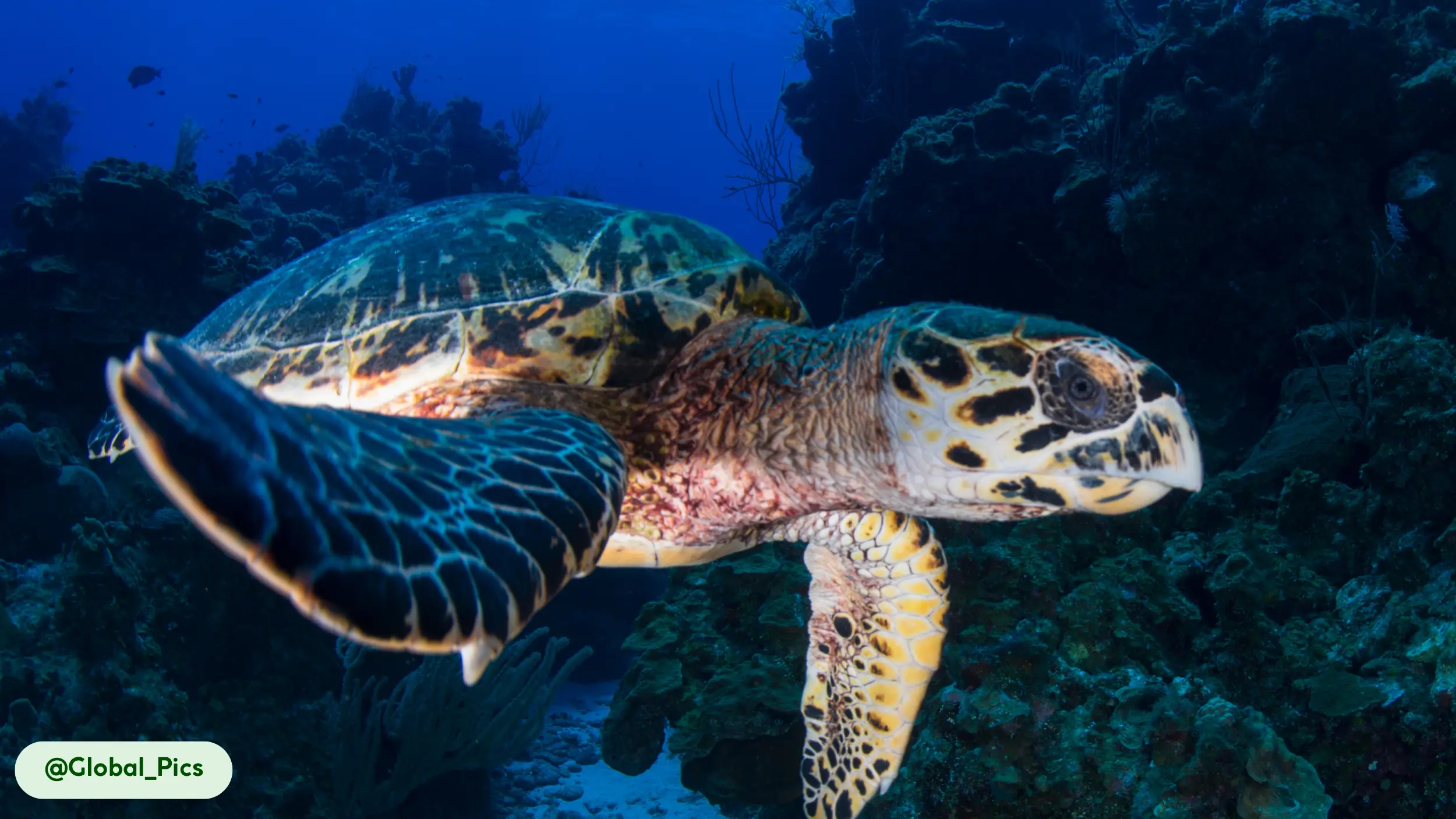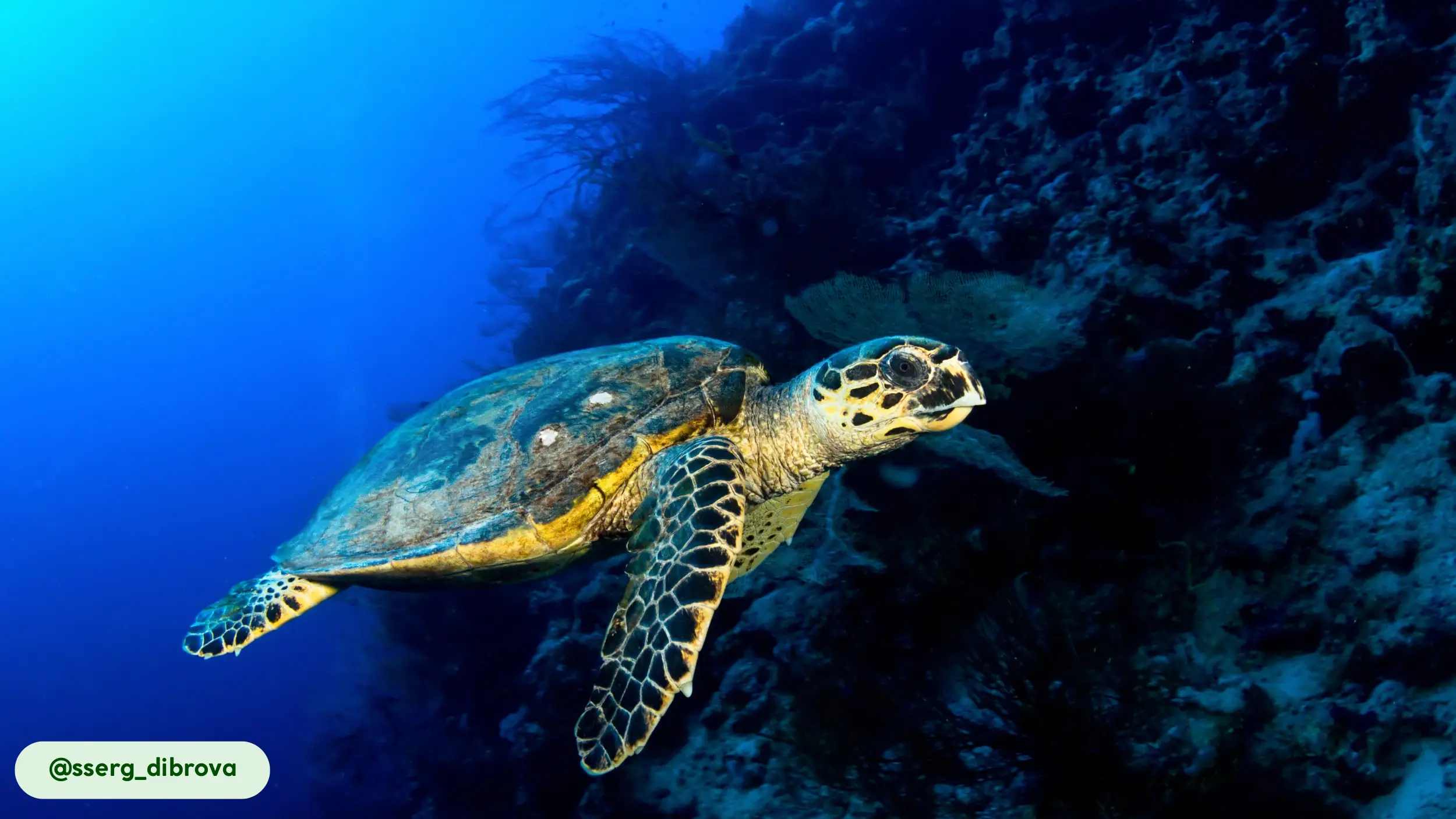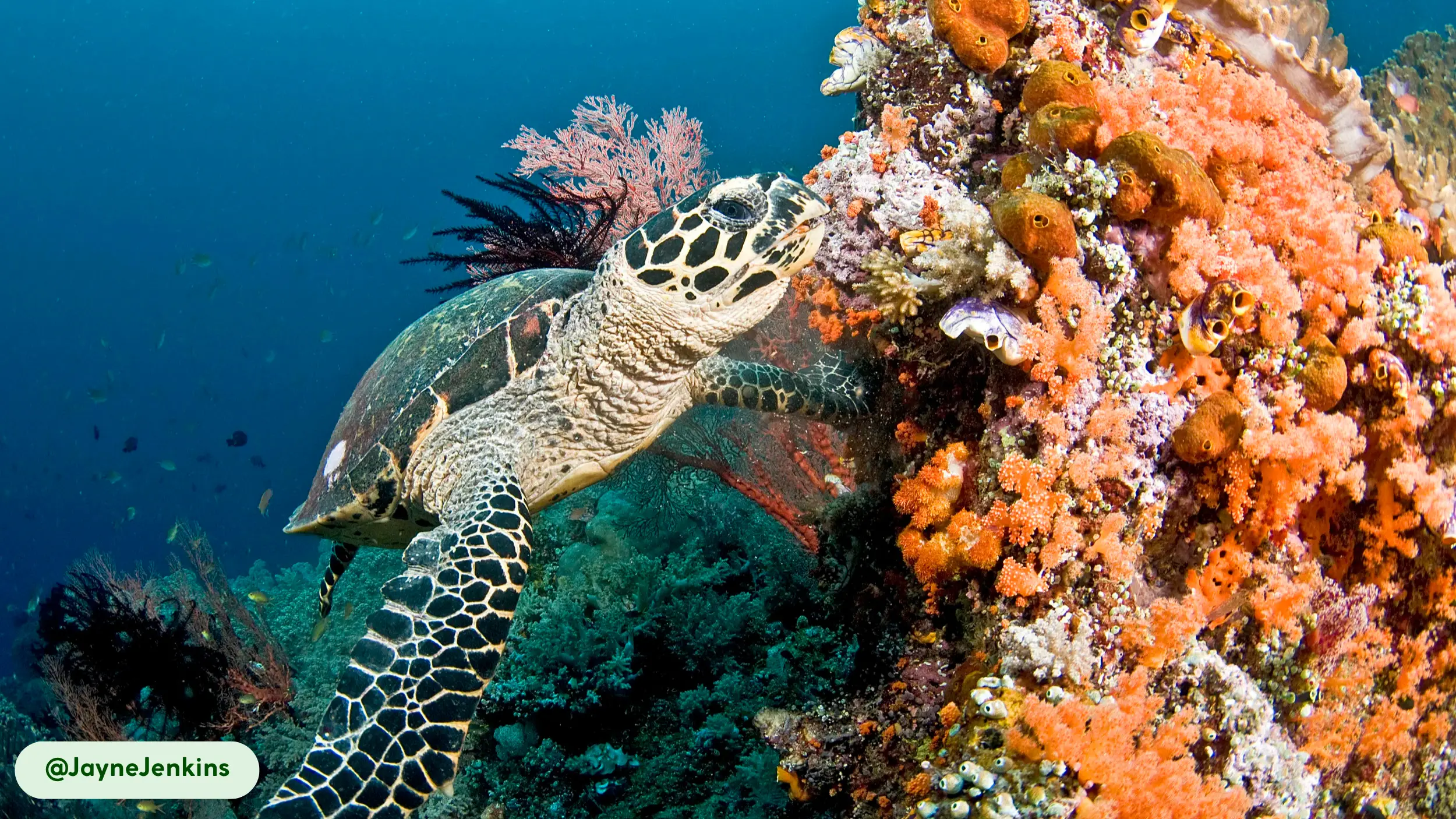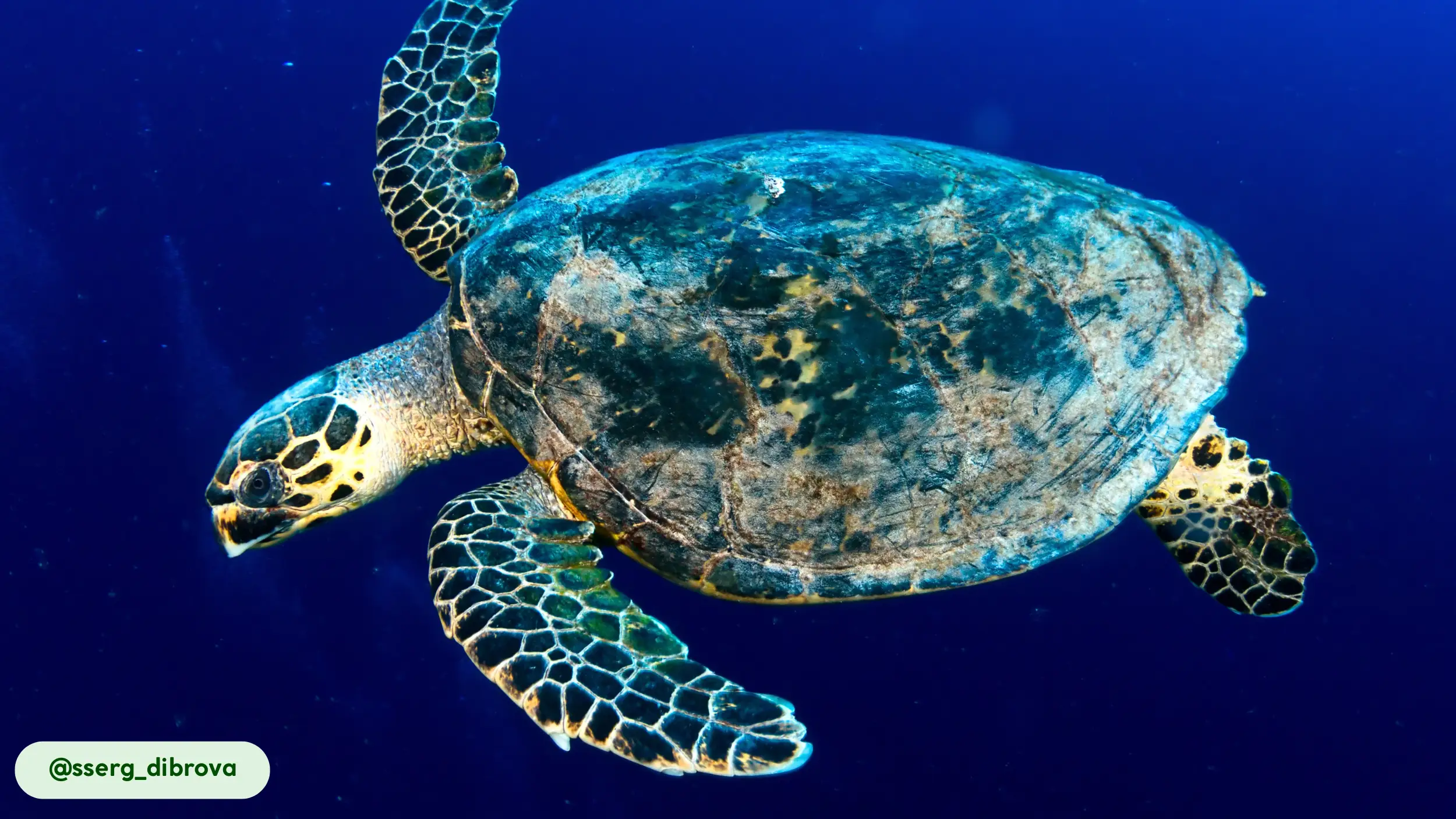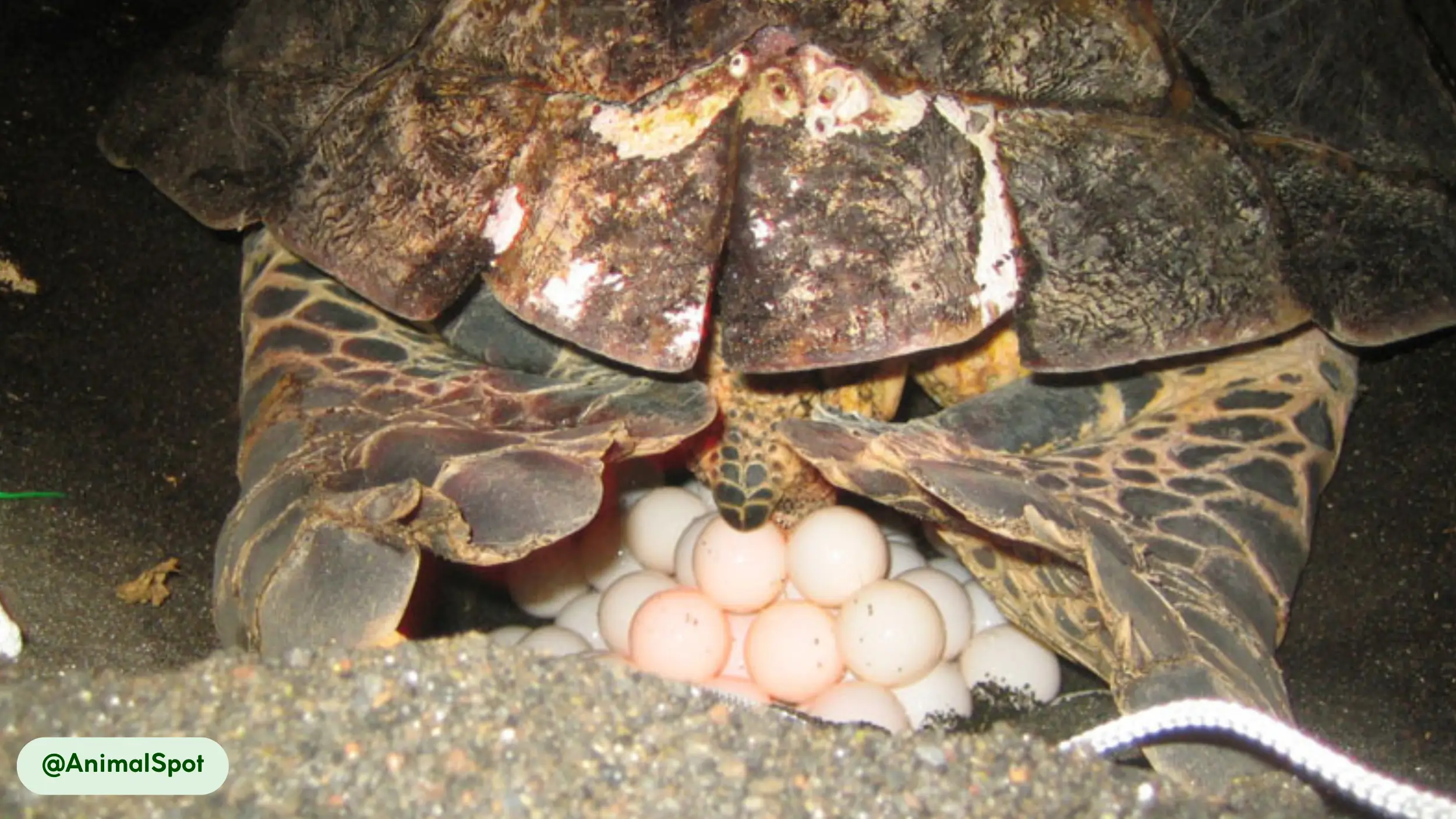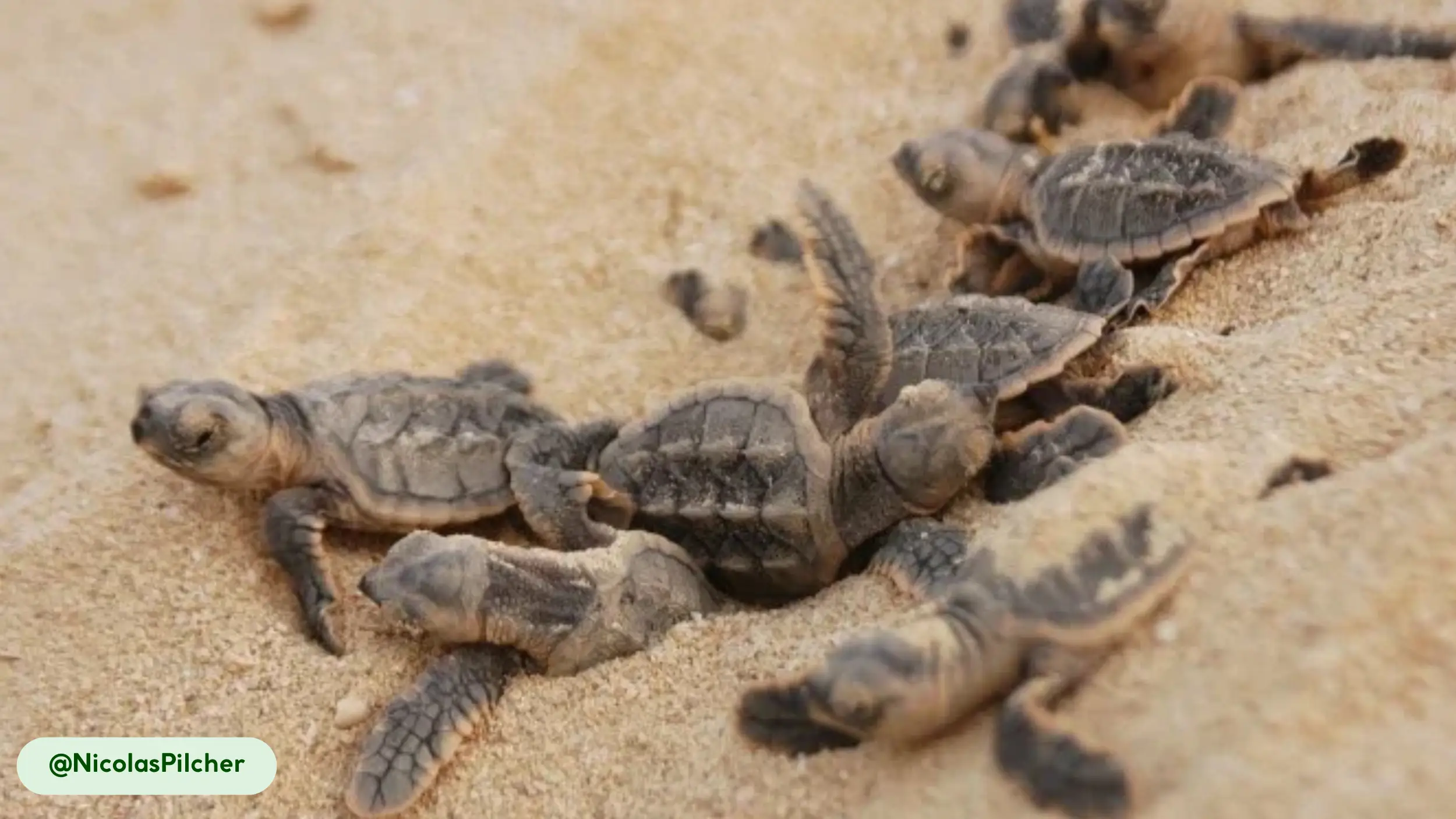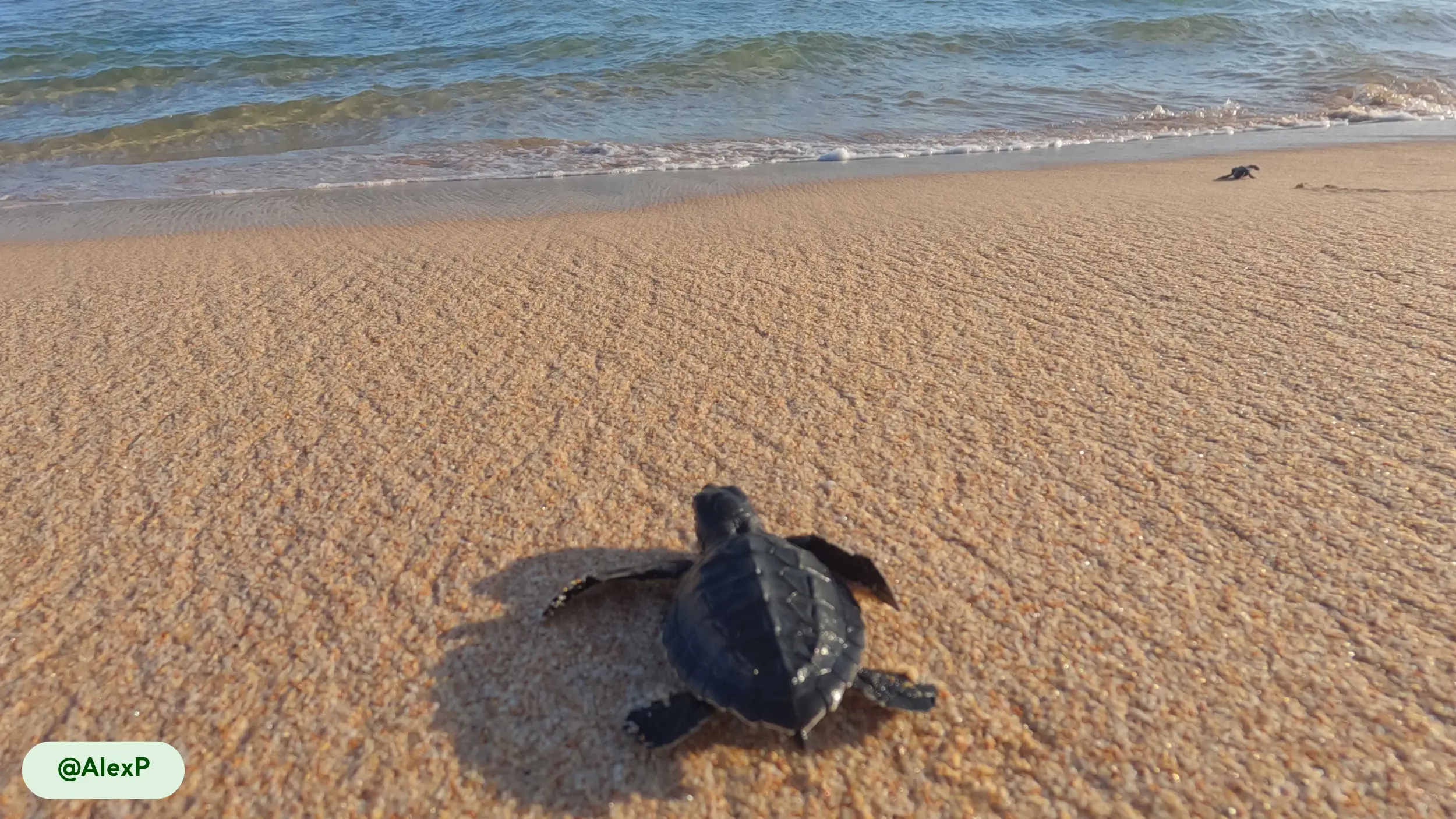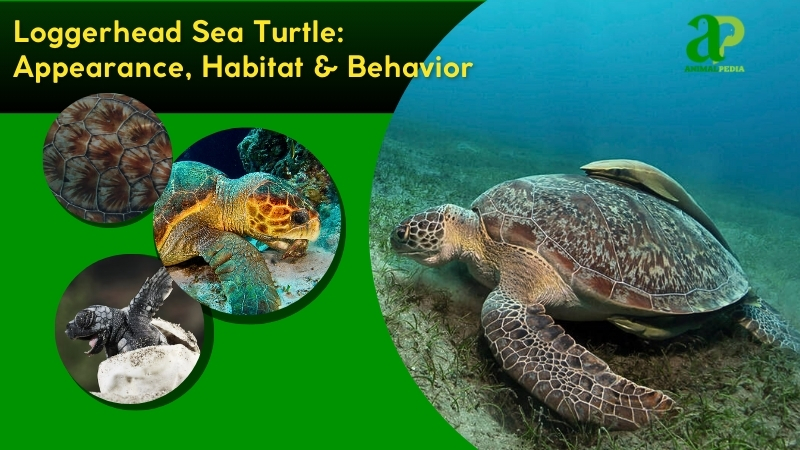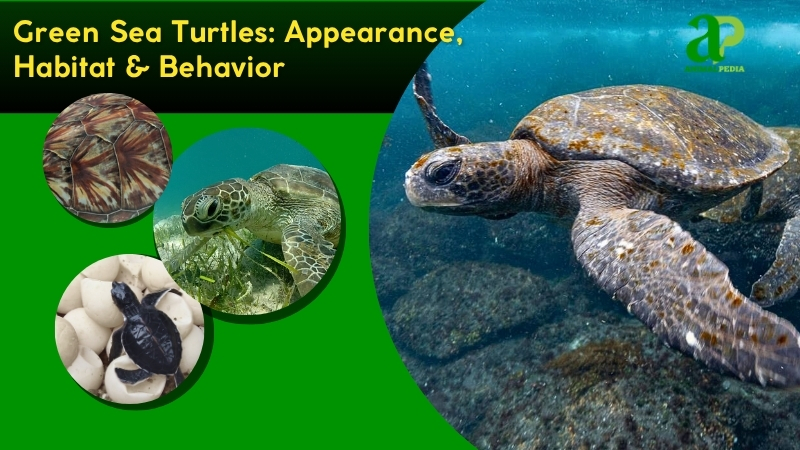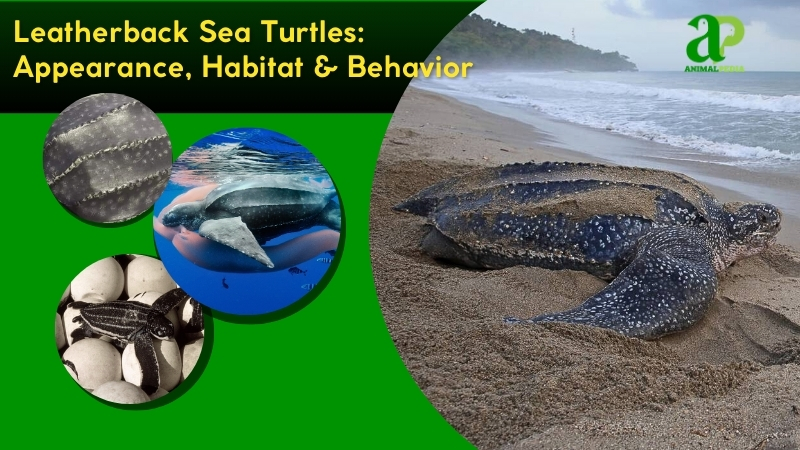Hawksbill Sea Turtles (Eretmochelys imbricata) are marine reptiles from the family Cheloniidae, known for their distinctively patterned, amber-colored shells. These creatures are primarily found in tropical and subtropical waters of the Atlantic, Pacific, and Indian Oceans.
They have a specialized diet consisting almost entirely of sponges, which they consume using their narrow beaks. The turtles grow to an average shell length of around 30 inches (76 cm) and a weight of about 150 lbs (68 kg).
Their movements are complex, with some individuals undertaking long-distance migrations between foraging and nesting grounds. Today, the Hawksbill sea turtle is classified as Critically Endangered by the International Union for Conservation of Nature (IUCN) (8).
This guide will provide a deeper understanding of the Hawksbill sea turtle’s unique biological characteristics, life history, and conservation status. How do these turtles manage to eat sponges, and what makes their shell so special?
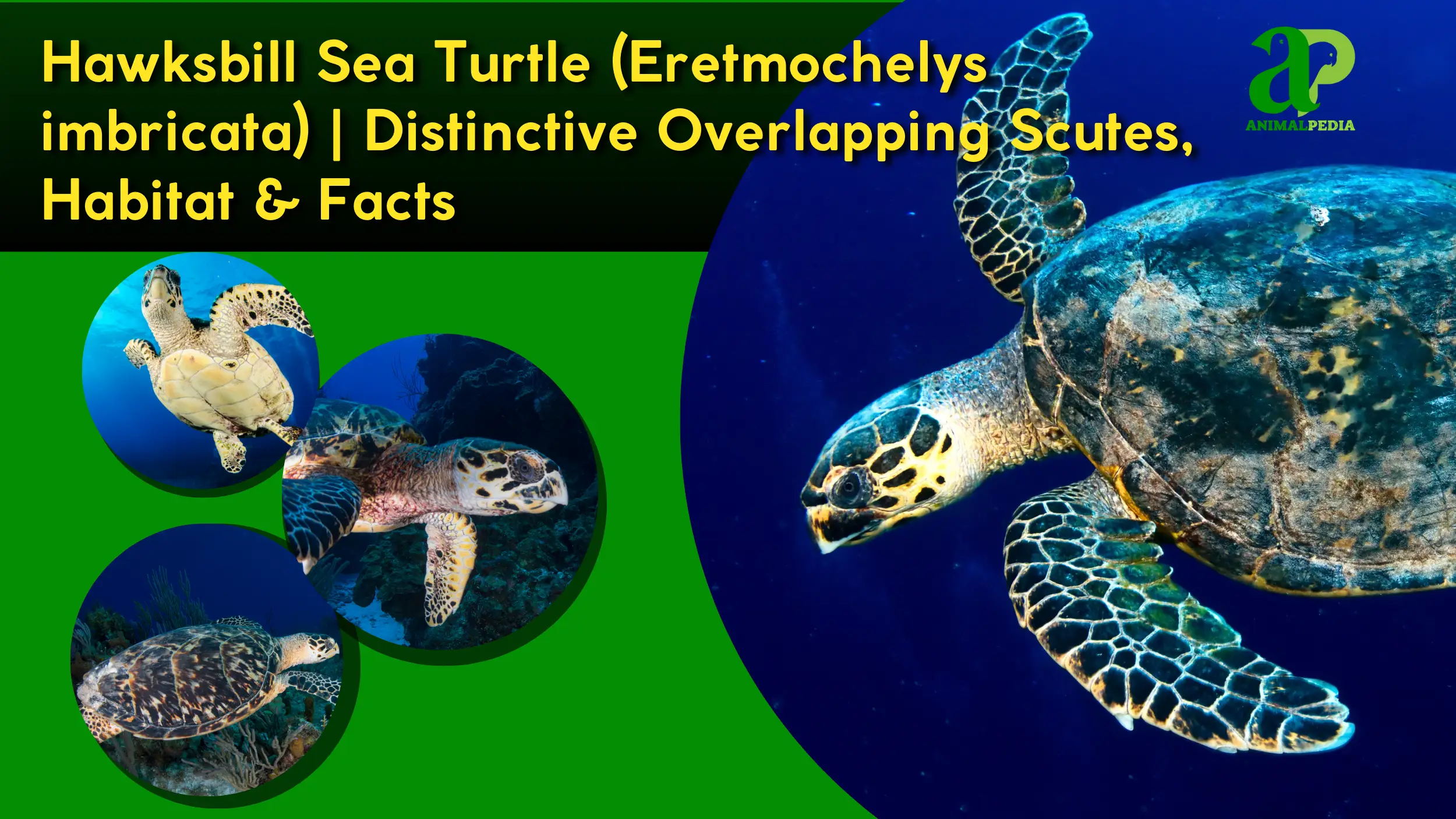
What Are Hawksbill Sea Turtles?
Hawksbill sea turtles, a globally distributed species, are a type of marine turtle distinguished by a raptor-like beak and a shell with prominent overlapping scutes. Their scientific classification places them within the class Reptilia, order Testudines, and family Cheloniidae, with the scientific name Eretmochelys imbricata.
They are known by other names, like the “tortoise shell turtle,” due to the beautiful coloration and pattern of their carapace. The species was first described scientifically in 1766 by Carl Linnaeus. The shell’s keratinous plates, or scutes, create a serrated appearance at the rear of the carapace, a feature that separates them from other sea turtle species.
Their bird-like beak is a specialized adaptation that allows them to forage for food within coral reefs and rocky substrates. This curved, pointed rostrum helps them to pry sponges from crevices and other hard-to-reach places (1, 10). This unique feeding behavior makes them a key component of reef ecosystems.
The turtles’ appearance serves as a primary identifier, with the distinctive shell and beak providing an immediate visual distinction. This physical makeup is a clear marker for their identity as a species.
The previous section established the classification and unique beak of these turtles. The next part of our guide will focus on their physical characteristics in detail.
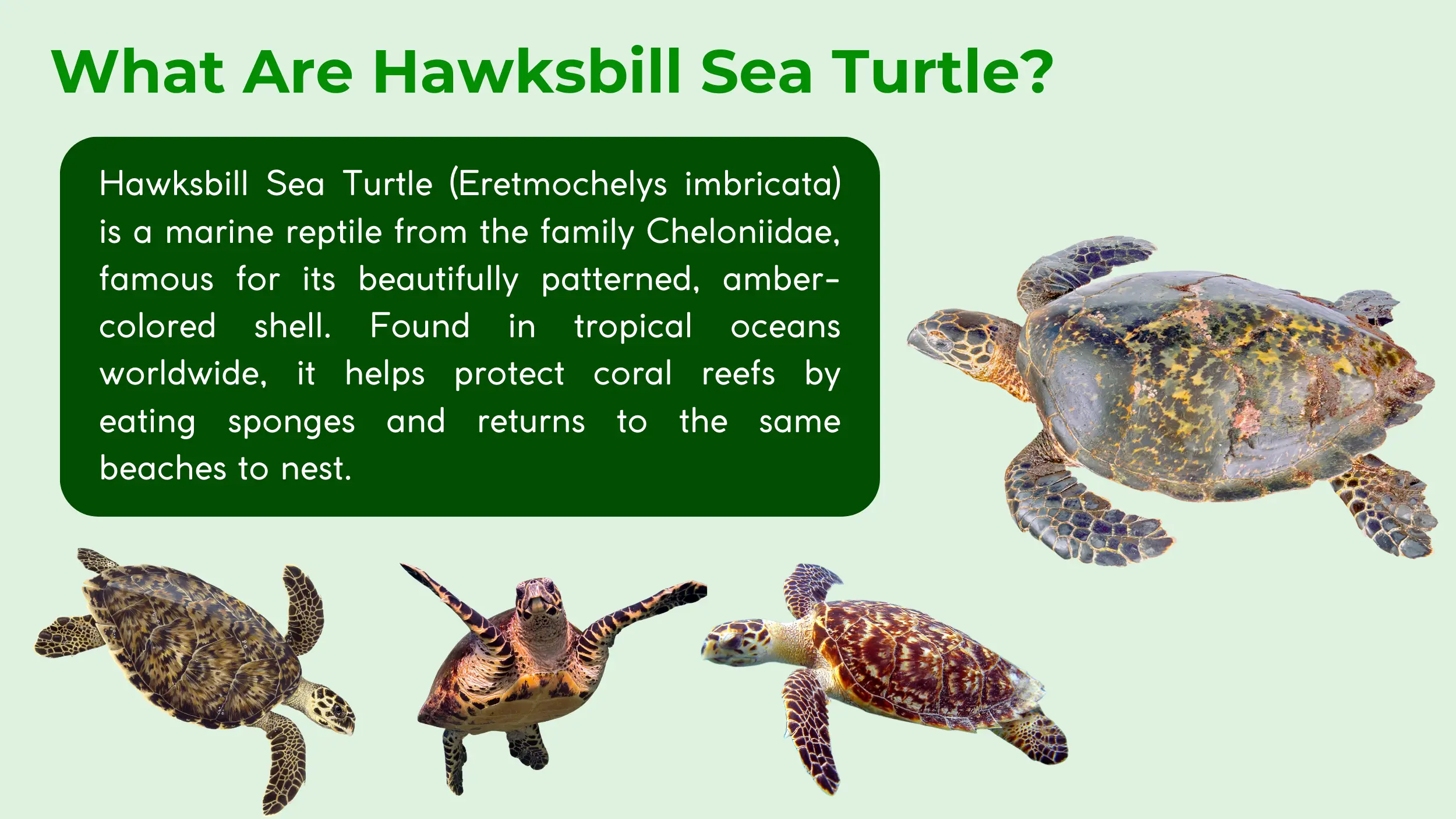
What Do Hawksbill Sea Turtles Look Like?
Hawksbill sea turtles possess a distinctive physical form characterized by a flattened body, protective carapace, and slender limbs modified into flippers. Their shell features a rich palette of amber, brown, and gold radiating patterns, lending them the “tortoise shell” name.
This mosaic of color and pattern is a key visual trait, but the most telling features are found in their facial and skeletal structure. The turtle’s head is narrow, tapering to a sharp beak, and its carapace has a heart-like or tapered shape that gives it a streamlined form. The shell’s scutes distinctly overlap, creating a serrated rear edge (6).
This species is recognizable by five specific features. These include the unique scutes, a narrow head with a pointed beak, two pairs of prefrontal scales between the eyes, a serrated trailing edge on the carapace, and two visible claws on each front flipper (6). A closer inspection of these features provides a definitive identification.
- Distinctive Overlapping Scutes: The prominent overlapping scutes, which historically made their shells prized for human commerce, give the carapace its rugged, serrated appearance. The coloration varies widely, but often presents a mosaic of brown, amber, and reddish-brown shades (6).
- Specialized Beak: A sharp, hooked beak, reminiscent of a hawk’s, is a primary tool for survival. This strong rostrum allows the turtles to access their primary food source, the sponges located deep within coral crevices and on rocky formations. This adaptation highlights the species’ specialized foraging strategy (1, 10).
- Narrow Head: The hawksbill’s slender head is another distinguishing feature. A key identifier is the presence of two pairs of prefrontal scales located between the eyes, a trait that sets them apart from other sea turtle species (6).
- Tapered Carapace: The turtle’s shell, or carapace, is more elongated and heart-shaped than those of other marine turtles. This tapered design is another morphological trait that defines the species’ profile (7).
- Paired Flippers: Their foreflippers are relatively long and slender, featuring two visible claws on each. These claws assist in climbing on reefs and grasping during reproduction.
Sexual dimorphism is also evident in the species. Mature male hawksbills typically have longer, thicker tails than females. Furthermore, the claws on the male’s front flippers are noticeably thicker and more curved, an adaptation that assists them in gripping the female’s shell during mating (6).
Now that we know what they look like, the next step is to understand their physical scale. We will now provide details on their size and weight.
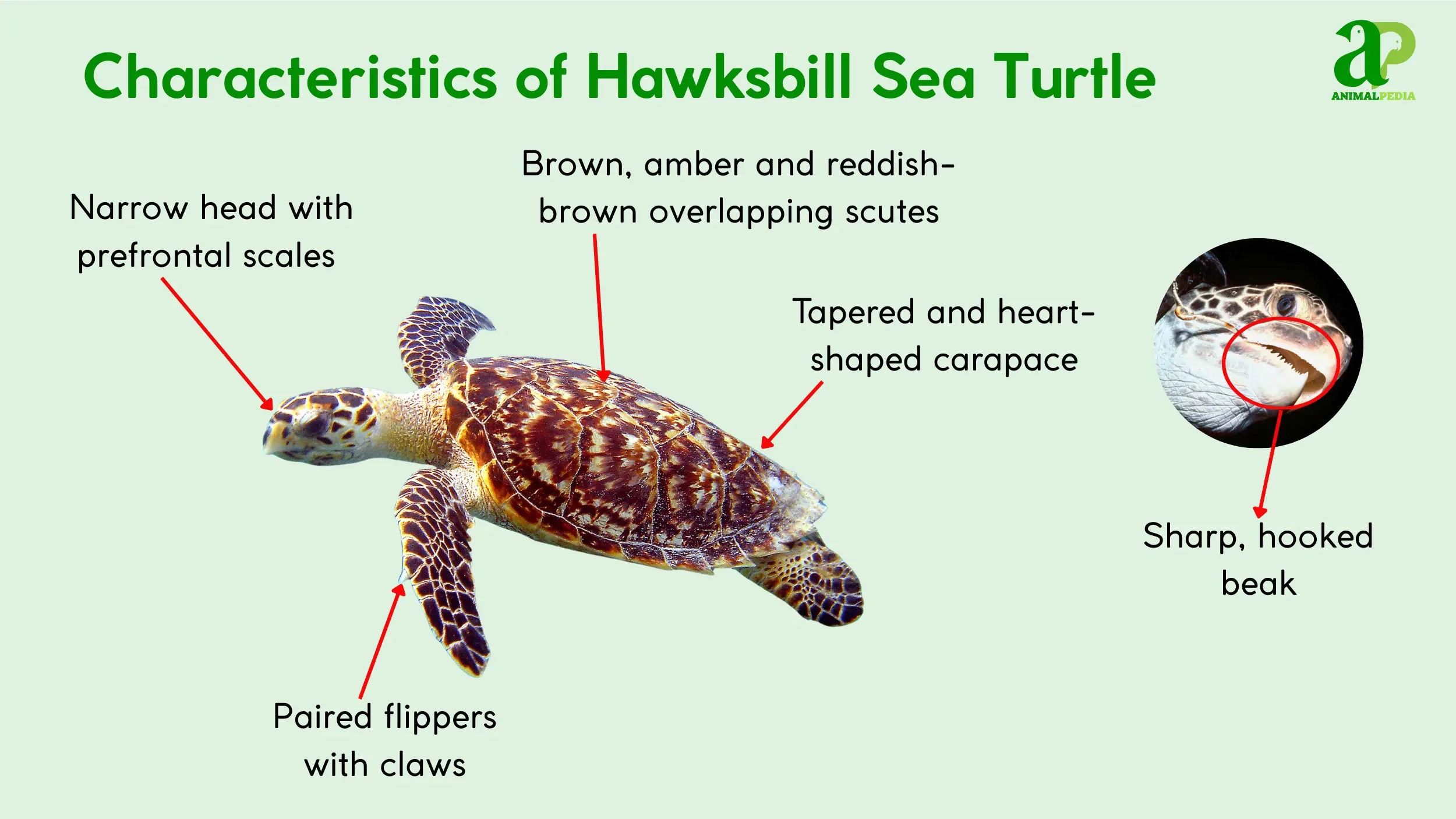
How Big Are Hawksbill Sea Turtles?
Adult hawksbill sea turtles typically have a carapace length ranging from 25 to 35 inches (63.5 to 89 cm), with an average length of around 30 inches (76 cm). Their weight generally falls between 100 to 150 lbs (45 to 68 kg). The size of these turtles can be influenced by geographic location and the availability of food resources (7).
As hatchlings, these turtles are quite small, measuring only 1 to 2 inches (2.5 to 5 cm) in length. They grow over many years, a process that varies depending on food and habitat. The adults’ carapace size is roughly comparable to that of a large suitcase, while their weight can equal that of a small compact refrigerator.
Sexual dimorphism in size is not pronounced, with females and males of similar length and weight, though males may have slightly larger claws (6).
| Male | Female | |
| Length | 25-35 inches | 25-35 inches |
| Weight | 100-150 lbs | 100-150 lbs |
| Record | Up to 37 inches (94 cm) | Up to 38 inches (97 cm) |
We have covered their size and appearance. The next section explores the places they call home.
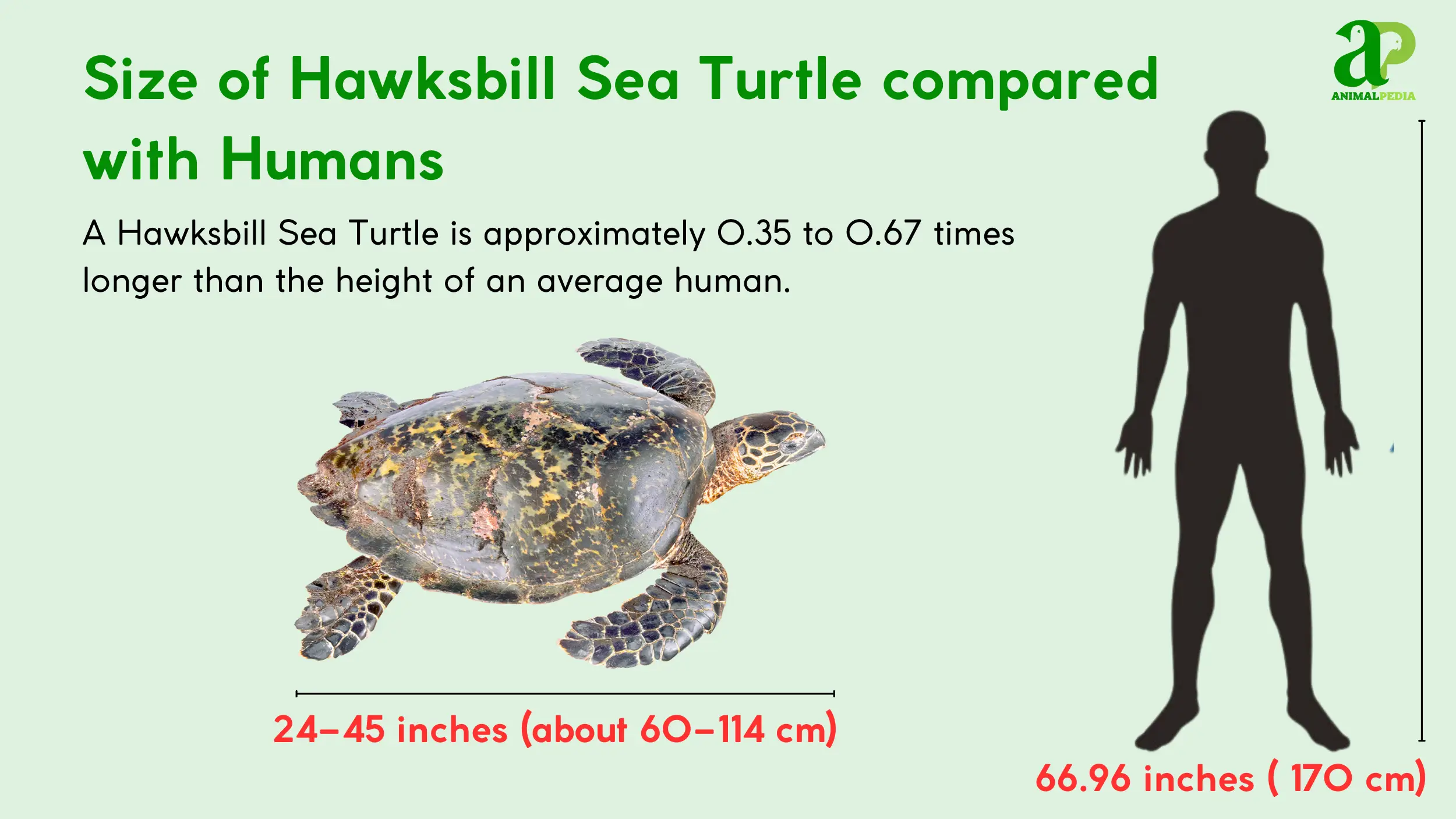
Where Do Hawksbill Sea Turtles Live?
Hawksbill sea turtles inhabit tropical and subtropical waters globally, residing primarily in the Atlantic, Pacific, and Indian Oceans (9). Their distribution spans from the shallow coastal areas to the high seas, exhibiting a preference for specific habitat types that change with their life stage.
They are found in both pelagic (open ocean) and neritic (coastal) environments. Hatchlings and young juveniles spend their early years in floating seaweed beds, such as those found in the Sargasso Sea (5).
As they mature, hawksbills migrate to coastal foraging grounds, favoring areas with a high density of sponges. Their preferred habitats include coral reefs, rocky bottoms, mangrove estuaries, and shallow lagoons (9). These turtles are typically observed at depths of around 60 feet (18 meters) but can dive to depths exceeding 600 feet (180 meters) in search of food (5).
The turtles are not known to be territorial in the traditional sense, but they often return to specific foraging sites and nesting beaches. They require warm waters, as their metabolism is dependent on external temperatures.
We have established their home and physical traits. Now, we will examine how they live and behave within those environments.
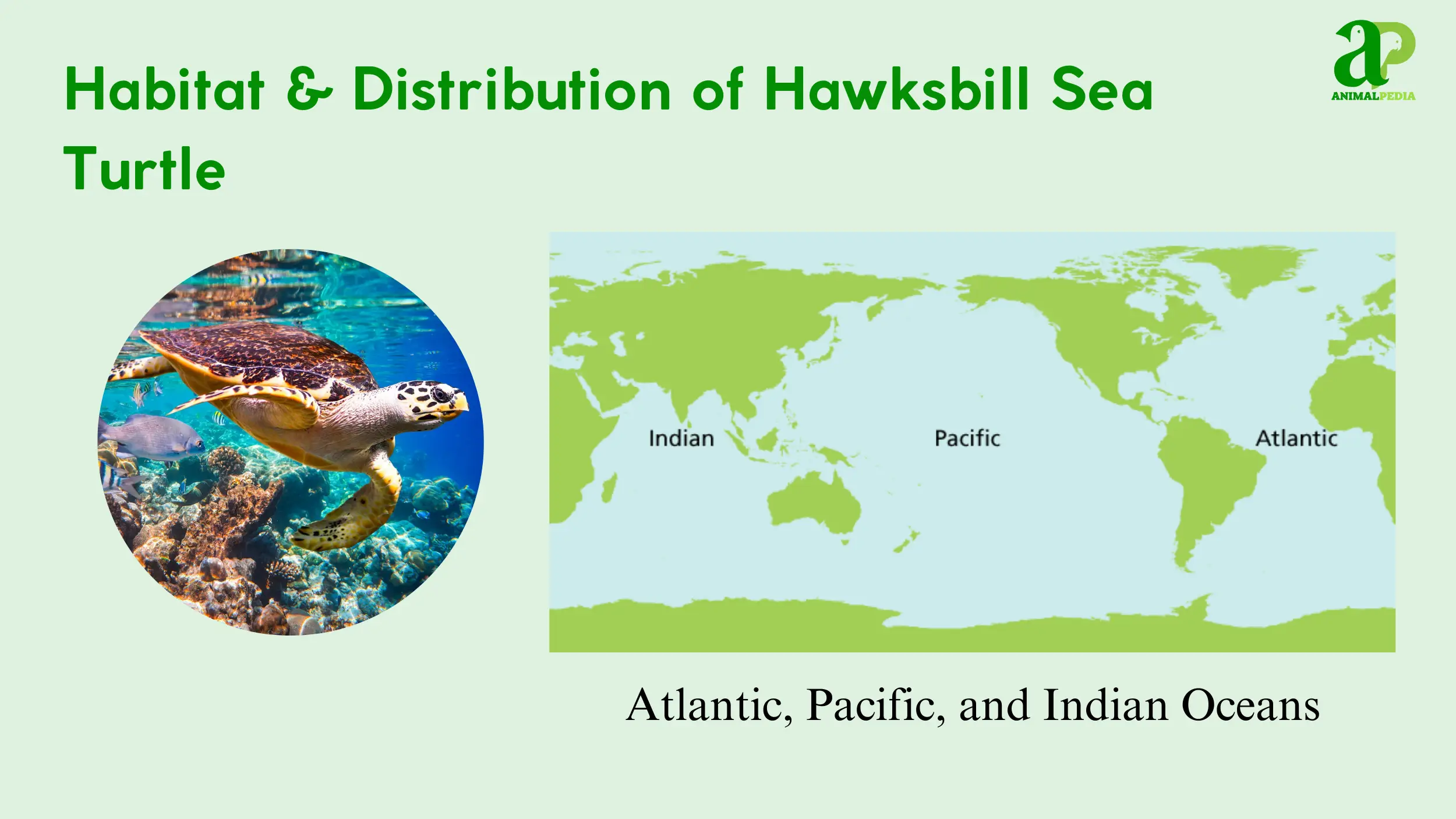
How Do Hawksbill Sea Turtles Behave?
Hawksbill sea turtles exhibit complex behaviors tied to foraging, migration, and nesting, with distinct patterns related to their life cycle. Their primary behaviors are divided into three key areas of focus.
- Diet and Feeding: Hawksbills are specialists that forage within coral reefs, using a sharp beak to consume sponges, their primary food source.
- Movement and Abilities: They are powerful swimmers, capable of long-distance migrations between foraging grounds and nesting beaches, and deep dives for food.
- Daily/Seasonal Patterns: Their activity is influenced by daily tides and seasonal cycles, with females undertaking long migrations to nesting sites at specific times of the year.
A closer look at their diet reveals how their physical traits are perfectly suited to their unique feeding habits.
Diet and Feeding
Hawksbill sea turtles are specialized spongivores. Their diet consists almost entirely of sponges, which are often toxic to other marine life (10). Their sharp, hawk-like beaks allow them to access crevices in coral reefs and rocky areas to pry off sponges.
This specialized diet allows them to thrive in an ecological niche that few other species can exploit (1). Their feeding pattern is opportunistic, with foraging behavior occurring throughout the day.
The turtles sequester toxins from the sponges in their own tissues without harm, a unique adaptation that can make their flesh toxic to predators. This feeding behavior is central to their role in maintaining healthy coral reef ecosystems by controlling sponge populations.
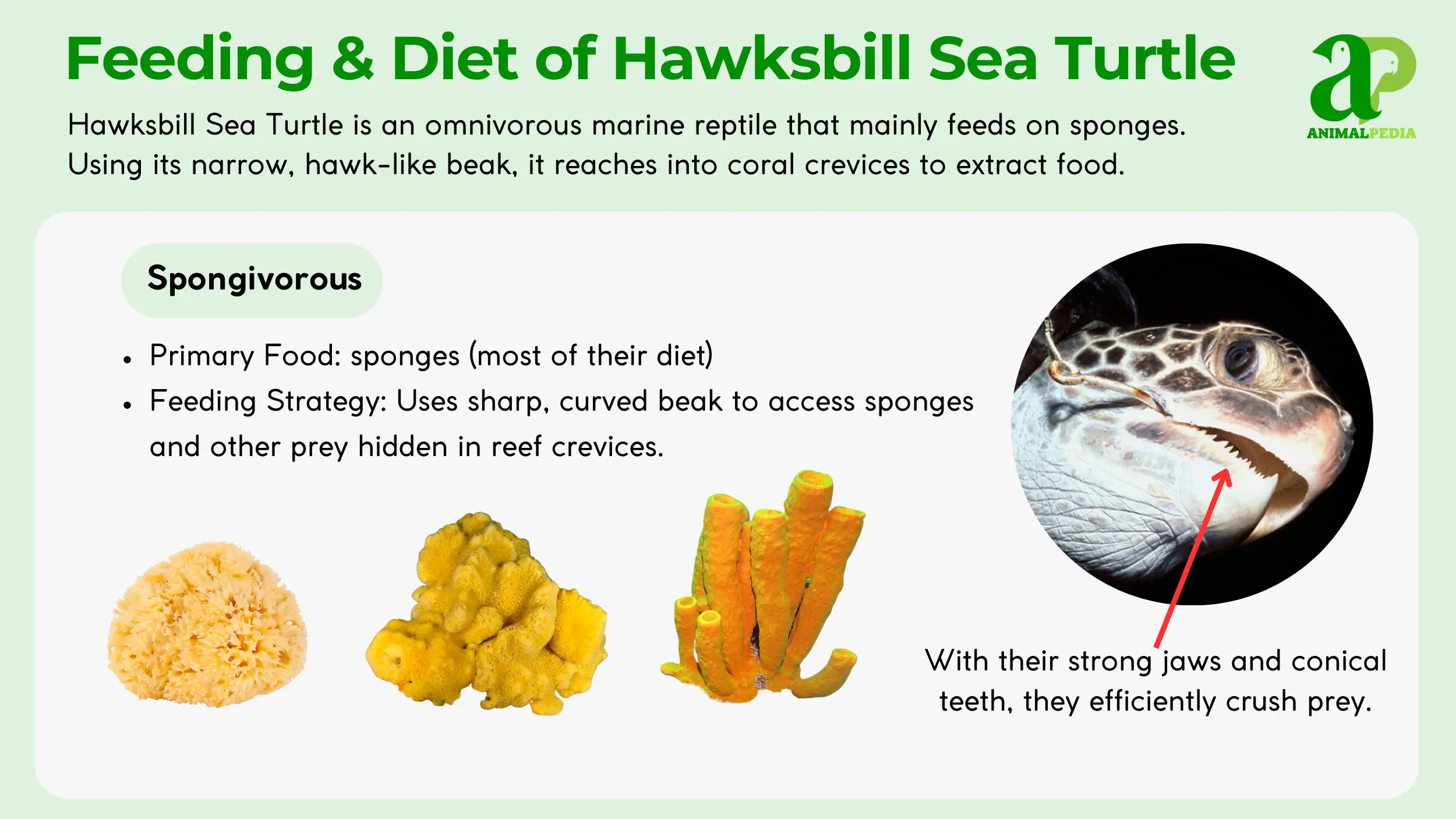
Movement and Abilities
Hawksbill sea turtles move through powerful swimming, with movements defined by both short foraging trips and extensive seasonal migrations.
Their movement is a combination of foraging and migratory journeys. In their oceanic phase, juveniles travel with currents. Adult turtles, however, undertake impressive migrations between foraging and nesting grounds, often traveling thousands of miles (5).
- Foraging Movement: Characterized by short, local trips within their feeding grounds, often around coral reefs.
- Migratory Movement: Long-distance journeys between different habitats, such as from foraging areas to nesting beaches.
Hawksbills are capable swimmers, reaching speeds of up to 30 miles per hour (48 km/h) for short bursts. Their physical capabilities include deep dives, with some individuals recorded descending over 600 feet (180 meters) in pursuit of prey (5).
Their powerful flippers provide the thrust needed for both rapid acceleration and endurance during long migrations. Their special ability is their geomagnetic navigation, allowing them to precisely return to their birth beaches to nest, a feat of natural instinct.
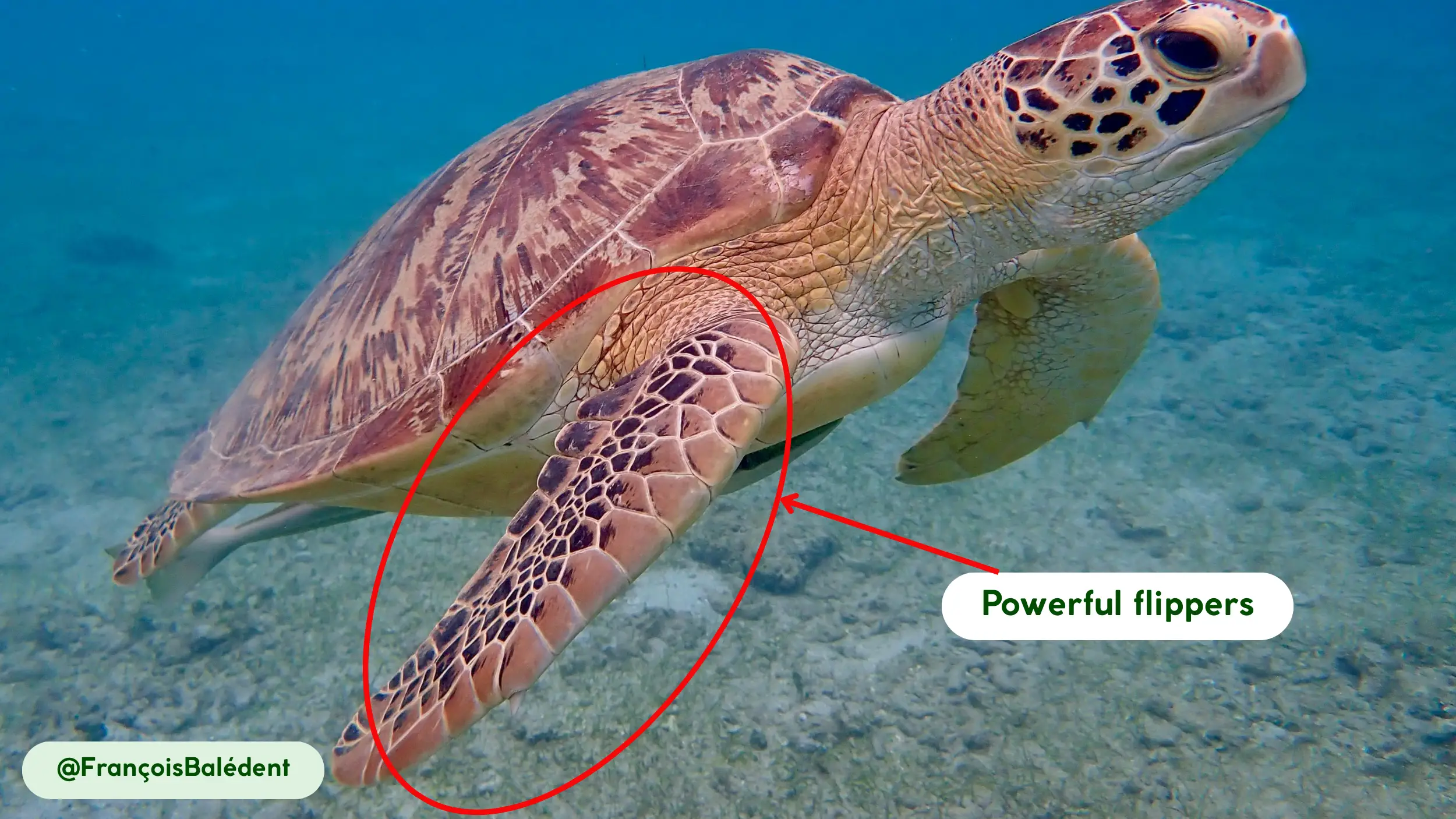
Daily/Seasonal Patterns
Hawksbill sea turtles are active during both the day and night, with their daily routine influenced by tide cycles and food availability.
The daily activity cycle of hawksbills is not strictly diurnal or nocturnal. Foraging behavior can happen at any time, though it often aligns with tidal changes that expose or make certain areas more accessible. They often rest in caves or under ledges on the reef.
- Morning (6 AM – 10 AM): Begin foraging, leaving their resting spots to seek out sponges and other prey.
- Daytime (10 AM – 6 PM): Continue foraging, with activity possibly peaking during favorable tides.
- Evening/Night (6 PM – 6 AM): May continue to forage or seek shelter to rest.
Seasonal patterns are most pronounced in mature females, who undertake significant migrations to their nesting beaches. This migration occurs during the nesting season, which varies by region but typically falls within spring and summer (8).
This migratory behavior is a key seasonal event for the species. After nesting, the females return to their foraging grounds. Male turtles also migrate to nesting areas during the breeding season to mate, but their movements are less studied than those of the females.
Hawksbill sea turtles have a life cycle tied to their extensive travels. We will now learn how they reproduce and ensure the survival of their species.
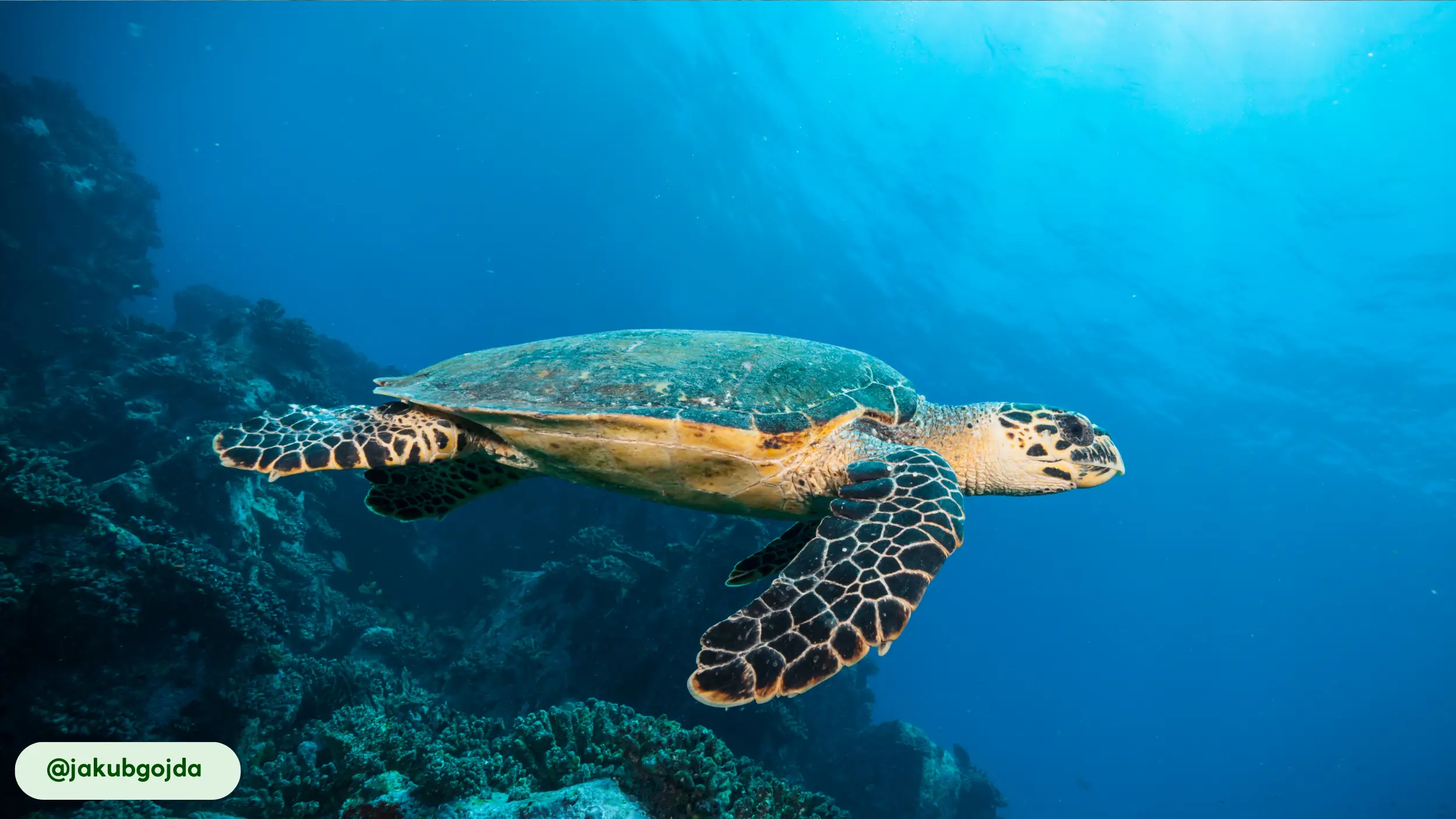
How Do Hawksbill Sea Turtles Reproduce?
Hawksbill sea turtles are oviparous, meaning they lay eggs. Mating occurs at sea near the nesting beaches during the breeding season, which corresponds with the months of spring and summer in the Northern Hemisphere (6). Courtship behavior involves the male pursuing and mounting the female, often with biting and grasping motions to secure his position (6).
After mating, the female travels to a nesting beach, typically the same one where she was born. She digs a body pit and then a narrow nest chamber where she deposits a clutch of approximately 130 eggs. Over the course of a season, a single female can lay between one to five clutches of eggs at intervals of about two weeks (3).
The incubation period for the eggs lasts for around 60 days, influenced by the temperature of the nest (3). Warmer temperatures produce more females, while cooler temperatures produce more males. The hatchlings emerge from the nest together and make a dash for the ocean, a period of high vulnerability to predators. Hawksbill turtles do not provide any parental care to their offspring after the eggs are laid and the nest is covered (3).
From the moment they hatch, the journey of a turtle begins. We will now explore how long that journey lasts and the factors that affect it.
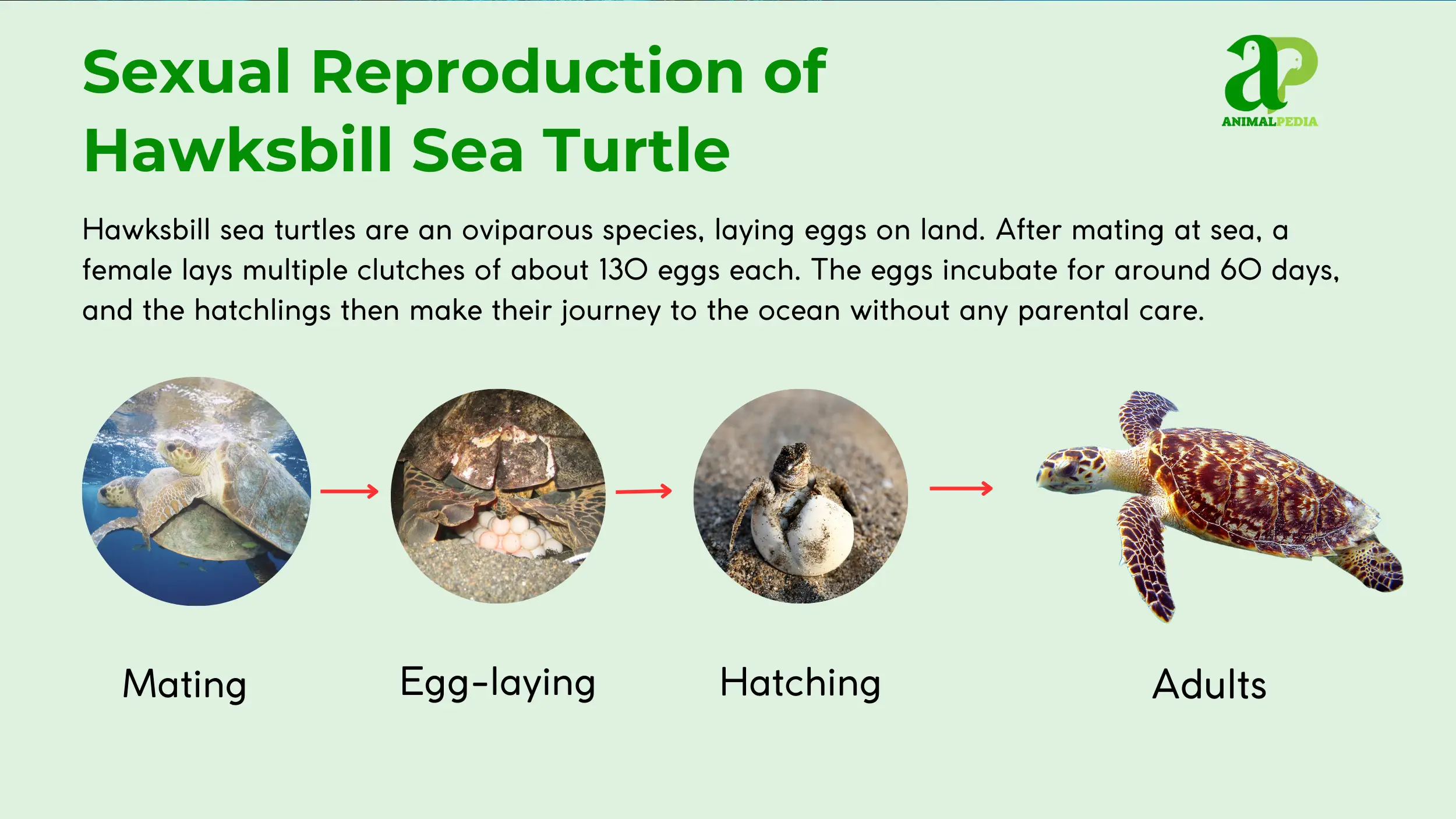
How Long Do Hawksbill Sea Turtles Live?
Hawksbill sea turtles can live for an estimated 30 to 50 years in the wild. This lifespan is an estimate, as it is difficult to track individual turtles over their entire lives, especially given their wide-ranging migratory behavior. The longevity of a turtle is affected by several factors, including the quality of its habitat, food availability, and the threat of predation (5).
Hatchlings face high mortality rates from predators on the beach and in the ocean. Human activities, such as entanglement in fishing gear and habitat destruction, also pose significant threats to their survival.
Hawksbill turtles have a long maturation period, reaching sexual maturity between 20 to 40 years of age, a late stage in life for a reptile (3). This slow maturation rate makes the species particularly susceptible to population decline, as it takes many years for a new generation to begin reproducing. The long lifespan of a hawksbill turtle allows them to contribute to the marine ecosystem for decades.
Their long life is a testament to their resilience in the face of many threats. Their importance is not limited to their lifespan. We will now explore how these animals provide benefits to humans.
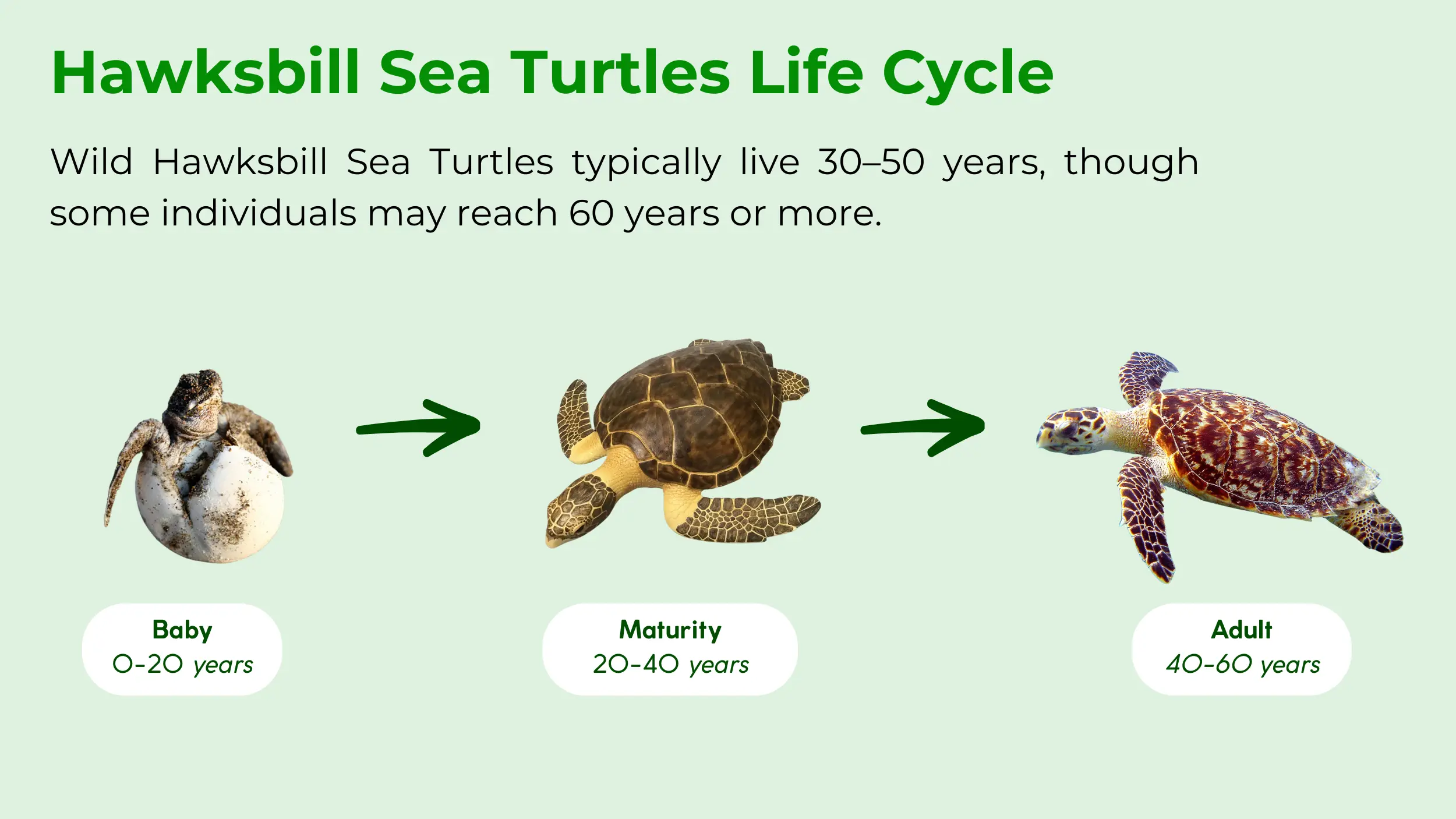
Are Hawksbill Sea Turtles Beneficial to Humans?
Hawksbill sea turtles are beneficial to humans primarily through their critical ecological function. As specialized spongivores, they play a key role in maintaining the health and biodiversity of coral reefs. By consuming sponges, they prevent these organisms from outcompeting and overgrowing the corals, which are the foundation of the entire reef ecosystem (10).
Healthy coral reefs, in turn, provide valuable services to humans, including serving as nurseries for commercially important fish species, protecting coastlines from storm damage, and supporting local economies through ecotourism (4).
The presence of hawksbill turtles contributes to marine ecotourism, attracting divers and nature enthusiasts to coastal communities around the world. These tourism activities generate revenue and can support conservation efforts (4). Culturally, the turtles hold significant value in many coastal societies, where they are often viewed as symbols of longevity and wisdom. Their ecological and economic contributions underscore their importance beyond their iconic appearance.
It is clear these turtles are valuable members of the ecosystem. However, they face significant threats. The next section will explain their conservation status and what actions are being taken to help them.
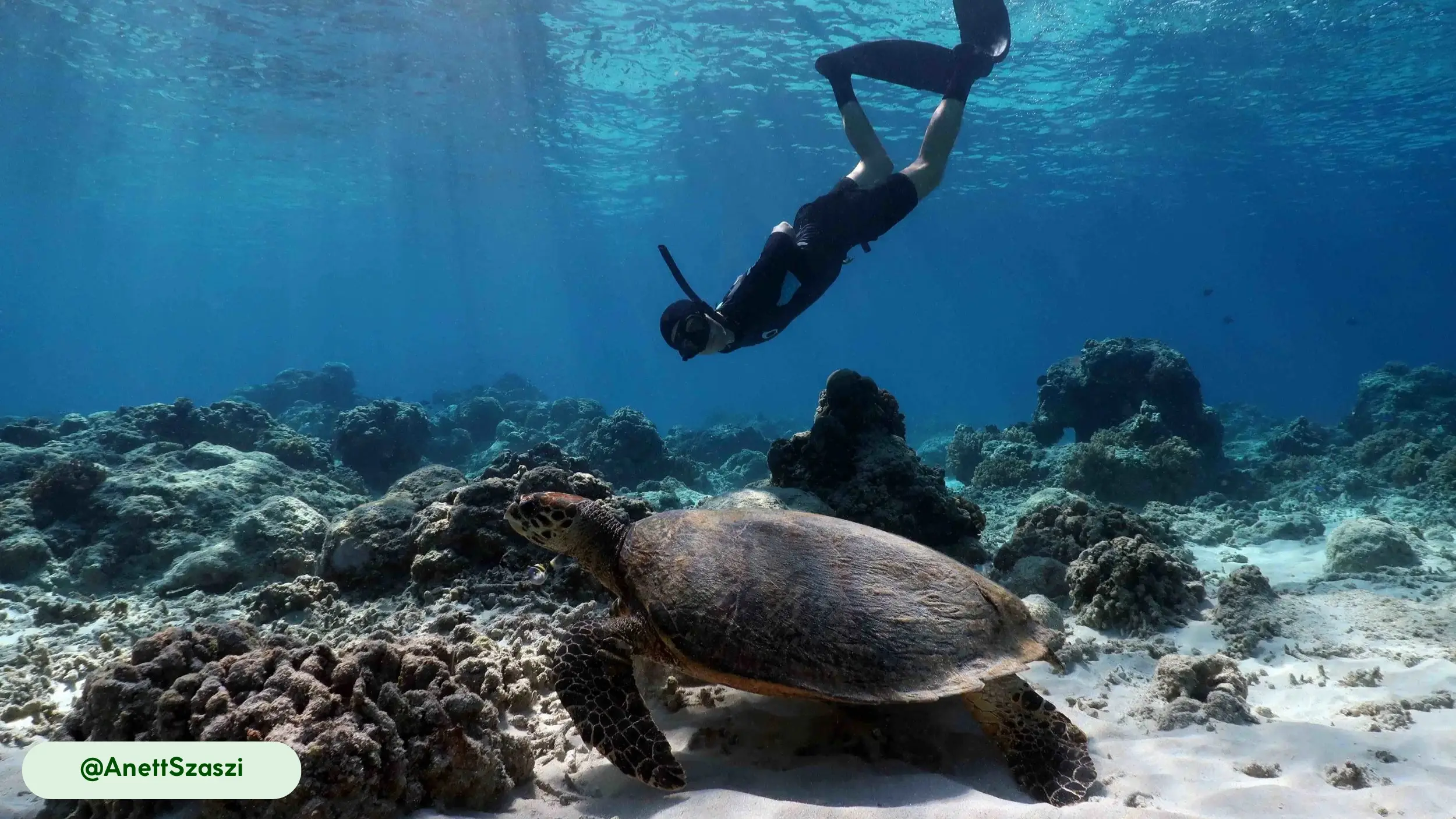
Are Hawksbill Sea Turtles Endangered?
Hawksbill sea turtles are classified as Critically Endangered globally, according to the IUCN Red List (8). The species has experienced a precipitous population decline, estimated at more than 80% over the last three generations, primarily from human activities (2). The most significant threats include the illegal trade of their shells for “tortoiseshell” products, the loss of nesting beaches and feeding grounds to coastal development, and bycatch in commercial fishing operations (2).
Despite their critically low numbers, their ecological role as a key predator of sponges makes them essential for the health of coral reefs. By controlling sponge populations, they allow corals to thrive, which in turn supports a vast array of other marine life (10).
International conservation efforts, such as the Convention on International Trade in Endangered Species of Wild Fauna and Flora (CITES), have been implemented to reduce the illegal trade, and the protection of critical nesting sites has led to localized population increases in some regions (2). Individuals can contribute to their survival by supporting sustainable tourism, not purchasing tortoiseshell products, and participating in coastal cleanups.
Their survival is a global effort, and they have many interesting traits beyond their conservation status. This final section will share some facts about them.
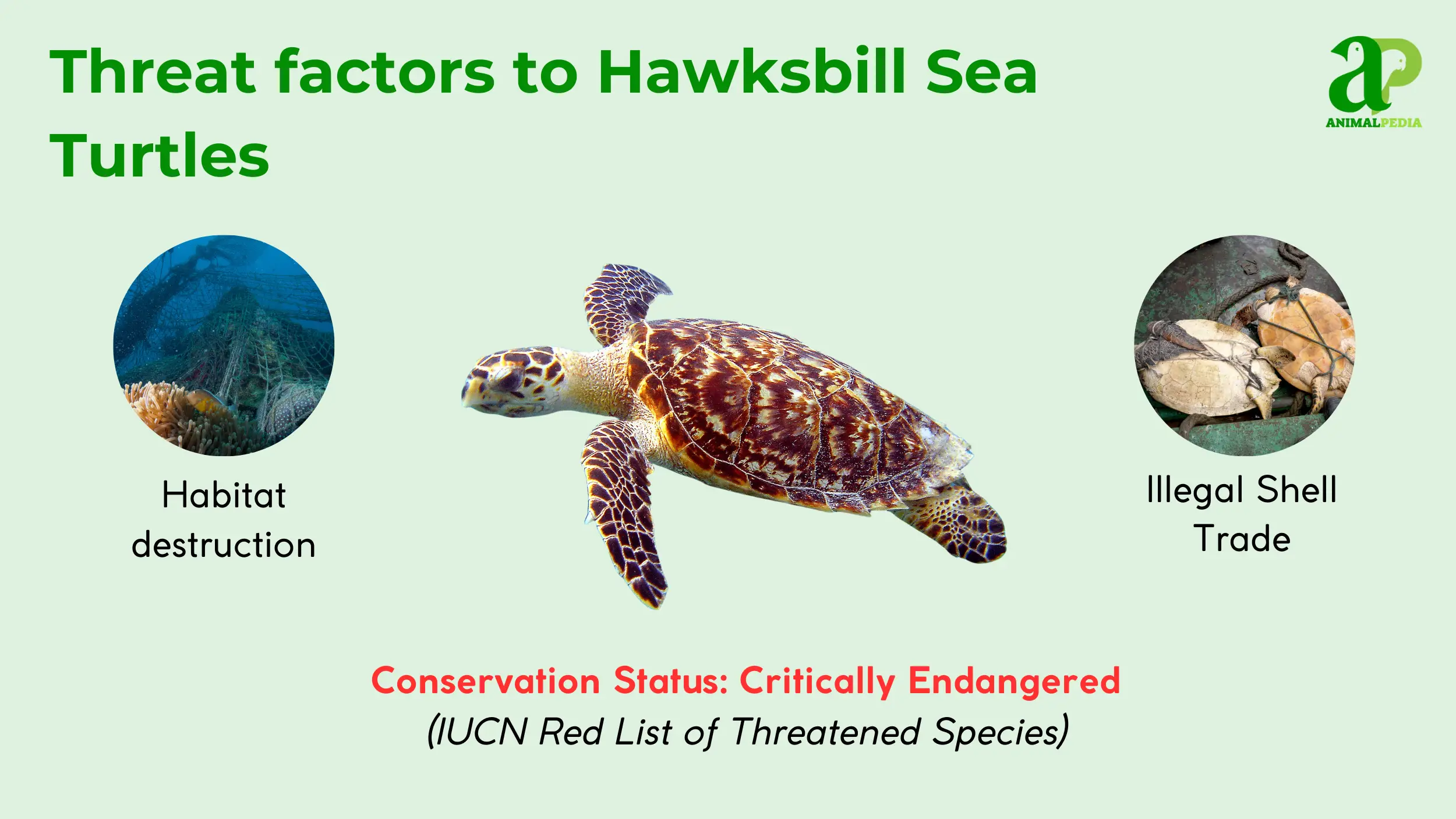
Frequently Asked Questions About Hawksbill Sea Turtles
How Many Hawksbill Sea Turtles Are Left?
An exact global population count is not available due to their wide distribution. However, the number of nesting females has been estimated to be between 20,000 to 25,000 (8). This represents a significant decline from historical numbers.
Conclusion
The hawksbill sea turtle is a marine creature of beauty and resilience. With their distinct shells and unique beaks, they play an irreplaceable role in keeping our coral reefs healthy. We at Animal Pedia believe in the power of knowledge to inspire a deeper connection with the natural world. To learn more about other incredible creatures and their stories, you can continue exploring our website.

